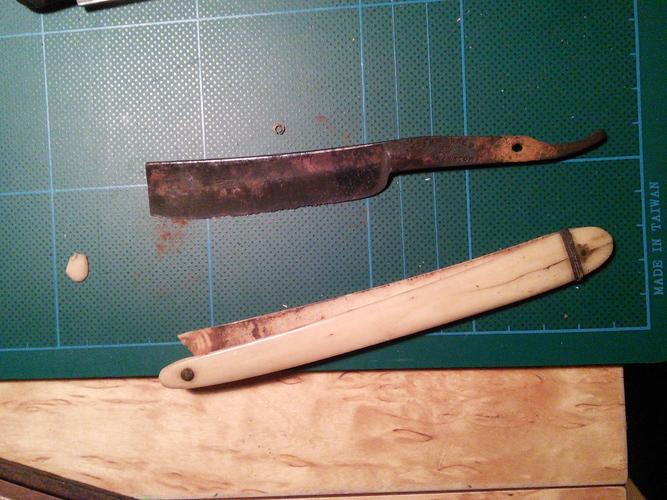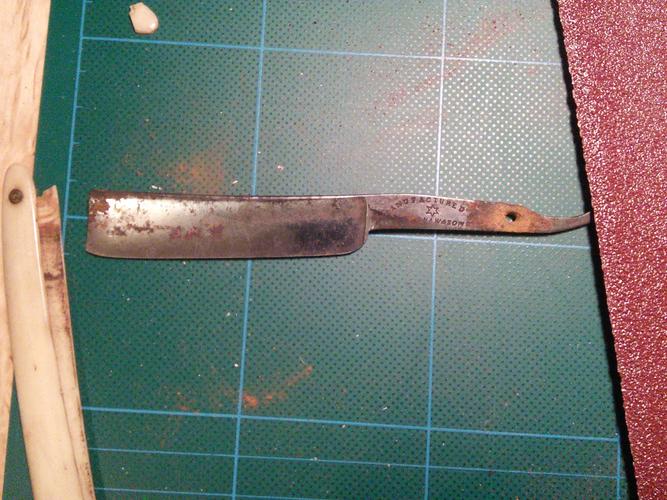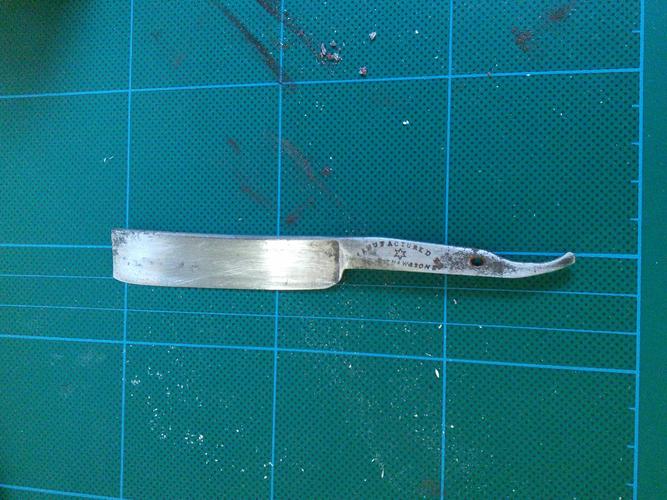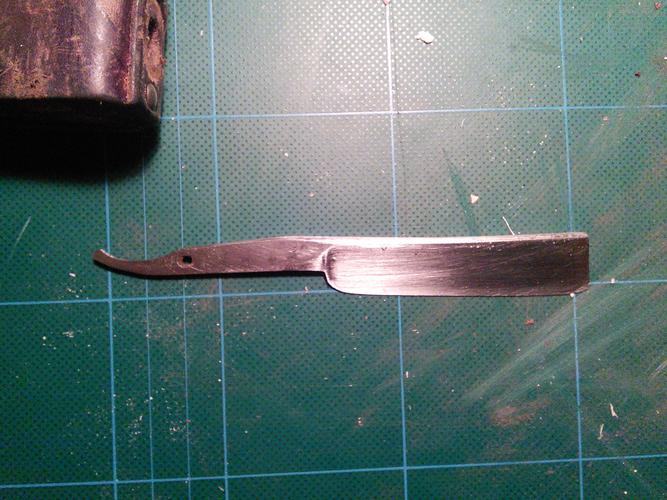Results 1 to 8 of 8
Threaded View
-
03-13-2014, 11:04 PM #1Junior Member

- Join Date
- Mar 2014
- Location
- Sweden, the south
- Posts
- 2
Thanked: 0 Advice in the process of restoration
Advice in the process of restoration
Hello!
I just started restoring my first straight razor and i would love some advice in the process. Will i be able to get rid of the holes and black spots from the rust or do i have to stick with it and just polish up the rest of the razor? If you have any opinions on my methods so far I would love to have some advice.
1 picture, the knife itself

After "bread knifing" it with 60 grit sandpaper

Polished it up with autosol and 80 grit sandpaper

Current status, rough love with 120/180 grit sandpaper

Next step is to continue to polish it with finer and finer wet sandpaper. I find it difficult to reach the small hole where the blade starts and Im afraid i wont be able to get rid of the rust in the text on the knife or the holes/black spots on the blade.
I would really apreciate some help
Thanks!Last edited by Slimhunk; 03-13-2014 at 11:18 PM.


 8Likes
8Likes
 LinkBack URL
LinkBack URL About LinkBacks
About LinkBacks






 Reply With Quote
Reply With Quote